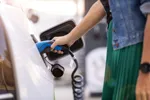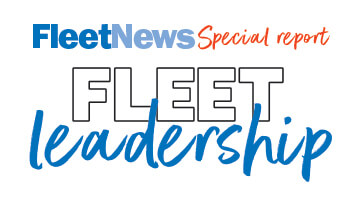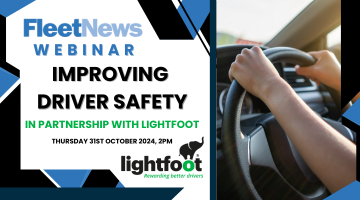Many fleet managers talk about how they accidently fell into the role – or were pushed. For Dale Eynon, head of fleet at the Environment Agency, it was a clear career choice.
Eynon had spent eight years doing emergency planning at the agency when a vacancy came up in the fleet department, heading a team of 37.
“I had an interest in cars, so I saw this as an opportunity and a real challenge,” he says.
That was three-and-a-half years ago. Over that time he’s made significant changes, which have reduced fleet costs by more than £10 million.
As Mark Ford-Powell, Environment Agency business manager, puts it: “Pre-Dale we were doing a good job; now we are doing a great job.”
Eynon first launched a wide-ranging management review. It resulted in 52 action points – the underlying theme was a lack of efficiency and a failure to exploit a green agenda.
“We had to build relationships with our customers, suppliers and the board,” Eynon says.
“We were a hidden operation, yet our CO2 contribution to the business was huge.”
He pulled the eight regional fleet teams together as a central team at the Peterborough office and set about making the operation a hot-bed of best practice and forward-thinking on the environment.
The company has taken a two-pronged approach: improving its own performance by ‘greening’ the fleet and trying new technology, and improving the performance of its customers by promoting its work with suppliers and challenging them to be the greenest in the UK.
“We will help them by sending in consultants – we want to help green the wider world,” Eynon says.
He introduced CO2 restrictions in April 2007, replacing a linear scoring system based on NOx, CO2, global warming and a series of complex calculations.
Small cars are currently 120g/km, medium cars are 130g/km, larger cars are 140g/km. Each is re-evaluated every year with a view to reducing further (the 120g/km threshold might be cut to 115 or even 110 next year).
The agency is also assessing its seven-seat MPVs and could add them to the 140g/km cap.
The policy has brought down average CO2 on cars to around 136g/km, well on the way to meeting the Government’s 2010-11 target of 130g/km.
Fleet drivers have been consulted each step of the way – Eynon has had to balance the agency’s objectives with the needs of the drivers, both business and personal.
“We can’t give perk cars because we are a Government department,” Eynon says. “Virtually all our cars are business use and staff pay a contribution for weekend and evening use, so we have to give them a car that also meets their personal needs.”
For the past 18 months the agency has been trialling bio-diesel on 90 vehicles, running them alongside a duplicate fleet of 90 diesel-powered vehicles to compare the results.
After considering different blend options, including 100% bio-diesel, it plumped for 22% because it gives the 20% reduction in carbon emissions needed to meet the Kyoto climate requirements.
“Our ambition is to run all of our commercial vehicles and cars on it,” says Eynon. “Peugeot is happy for us to do it as long as we change the maint-enance schedule; we hope the VW Group will, too.”
Leasing provider Hitachi has agreed to share some of the risk, so even if some manufacturers do not support its plans, the agency has an option to go ahead anyway.
Trials have shown a slight – and unexpected – increase in fuel eff-iciency, which Eynon puts down to the fact that staff are being monitored and are therefore driving more carefully.
He’s keen to share the results with other fleets and manufacturers, which include full testing at Millbrook. “It’s not the ultimate solution, but it is part of our philosophy to use different methods to manage our carbon.”
The agency is also working hard to reduce its exposure to risk. Its latest project is driver risk management, an area that is not as big a priority among some local authorities as it should be.
It has outsourced the checking of driving licences via the DVLA (“licences are too easy to duplicate and managers wouldn’t know,” Eynon says).
The next stage is an annual online driver risk assessment. Drivers will be categorised high, medium or low risk according to accident rates, points on licence and other offences.
Action might include further assessments or physical training.
The new approach, which has just got board sign off and will also tie in eco-driving, replaces a programme of only training high mileage drivers who have had two or more accidents.
“This wasn’t reducing our accidents,” Eynon says. “The issues might be young drivers, not high mileage ones.”
The risk assessment contract will be awarded in early August for implementation in September. It will include spouses and around 10,000 people are expected to take part.
Spouses identified as high risk will either be excluded from driving agency cars or will have to undergo training at their own cost
“We can’t pay for them – it’s taxpayers’ money,” Eynon says.
He is cagey on the size of the fleet, guarding against accusations that the agency set up to tackle environmental issues is running too many polluting cars. All are job-essential, of course.
“We are here to create a better place for people to live. To do that we have to go to certain areas by vehicle – we have to have a fleet,” Eynon says.
The fleet is 10,000 assets, of which 5,000-6,000 are vehicle-based. The rest are plant-based, including pumps tractors and excavators, and boats.
Over the past year, Eynon has cut the number of vans and plant equipment by 10%, including getting rid of 50 4x4s, by challenging the business on the number of vehicles it needed.
The agency has moved to more site sharing of vehicles to improve utilisation and has downsized vehicles where appropriate. Last year, this saved the company £8.3 million – its target was a reduction of £1.75 million.
Eynon has also increased the regularity with which he assesses the van choice lists from three years to two.
And he’s considering moving from a solus van deal with Ford to a multi-badge arrangement. “We aren’t a huge buyer but people like to have their vehicles on our fleet – we can use that position in our talks.”
Since Eynon joined the fleet department, savings from reducing the size of the fleet, improving fuel efficiency and better funding options have exceeded £10 million. £2.4 million alone was saved by reducing business by 11.3 million miles.
Over the next 12-18 months, he will shrink the fleet further to its optimum size, which includes another 5% cut in the commercial fleet.
“We have to continue to deliver efficiency – if we don’t, then we aren’t doing our job,” Eynon says.
'Hearts and minds' improves utilisation
Challenging each department at the Environment Agency to better utilise its assets was a hearts and minds operation, according to Mark Ford-Powell.
“It’s a slow drip of education and cultural changes,” he says. “We explain what we are trying to achieve and explain that it’s not about getting rid of people.”
Each operation is closely involved in the planning and procurement, including specifying and testing vehicles. The agency promotes the fact that a smaller fleet can be replaced more often, giving staff more advanced models and
technology.
“We’ve been talking to them about strategic hire and are looking at cost analysis of commercial spot hire,” Ford-Powell adds.
“The long-term vision is to have sets of equipment as pool usage across the country that can be booked out. It gets away from the ownership view.”


















Login to comment
Comments
No comments have been made yet.